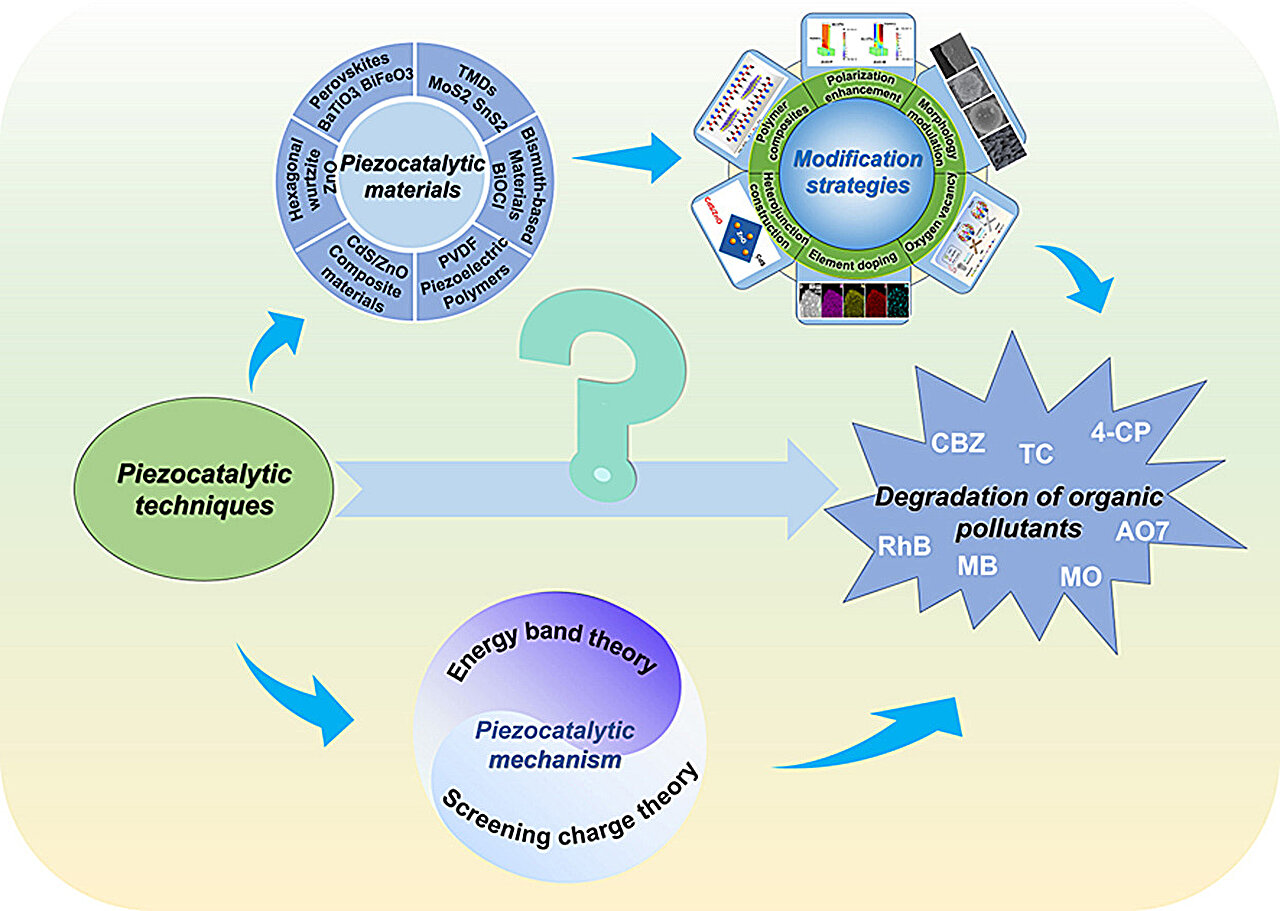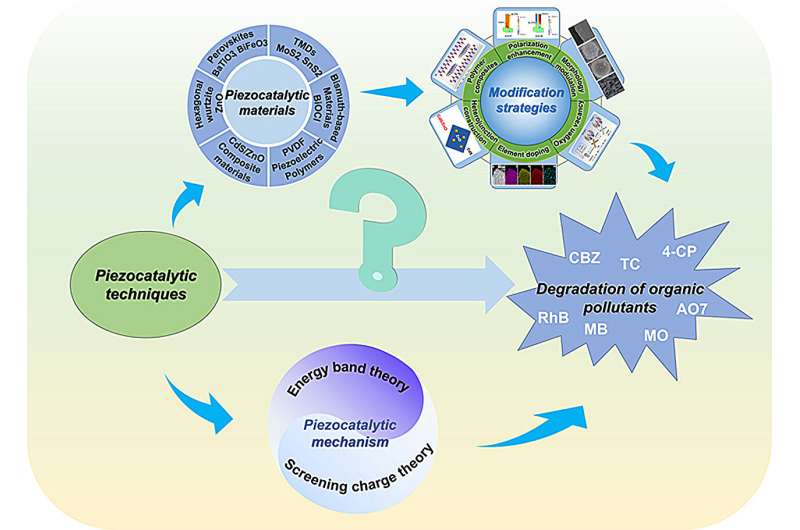

With the rapid growth of industrial and agricultural activities, water bodies are increasingly contaminated with harmful organic pollutants such as dyes, antibiotics, and bisphenol A. Traditional methods like adsorption, chemical treatments, and biological processes have limitations, including inefficiency, potential secondary pollution, and high operational costs.
Due to these challenges, there is an urgent need to explore innovative and sustainable technologies for water purification, leading to the investigation of piezocatalytic techniques that leverage mechanical energy to drive chemical reactions for effective pollutant degradation.
A new study, conducted by researchers from the University of South China and North China Electric Power University, was published on August 22, 2024, in the journal Eco-Environment & Health. The research highlights how piezocatalysis, a green chemistry approach, can utilize mechanical forces like ultrasonic vibrations to degrade various organic pollutants in water.
By integrating this technology with advanced oxidation processes, the study reveals new pathways for enhanced environmental remediation, offering a low-cost, efficient, and eco-friendly solution for water treatment.
The study focuses on the application of piezocatalytic techniques using different piezoelectric materials such as ZnO, BaTiO3, and MoS2, which show remarkable efficiency in degrading pollutants like dyes, antibiotics, and other hazardous organic compounds.
The process involves the conversion of mechanical energy into electrical energy, creating an internal electric field that drives redox reactions, leading to pollutant breakdown. Combining piezocatalysis with other technologies like photocatalysis further enhances pollutant degradation by increasing charge separation efficiency and extending the operational range.
Key highlights include the use of BaTiO3 nanoparticles, which demonstrated nearly complete degradation of RhB under mild mechanical conditions, and MoS2, which effectively utilize water flow to drive self-powered piezocatalytic reactions.
The study also discusses the modification strategies for enhancing piezoelectric performance, such as elemental doping and constructing heterojunctions to improve charge separation. These findings position piezocatalysis as a versatile tool in the sustainable management of water pollution, particularly in areas where conventional methods fall short.
Dr. Hongqing Wang, one of the study’s lead researchers, stated, “Piezocatalysis represents a groundbreaking approach to water purification, utilizing readily available mechanical energy to drive chemical reactions in an eco-friendly manner. The integration of this technology with advanced catalytic processes offers a promising pathway to address global water pollution challenges.
“Our research not only demonstrates the potential of piezocatalysis but also opens new opportunities for harnessing mechanical energy from natural sources, like tidal movements, to enhance environmental remediation efforts.”
The implications of this research are vast, presenting a sustainable alternative to traditional water treatment methods. Piezocatalytic techniques can be applied in various environmental settings, from wastewater treatment plants to decentralized systems in remote areas.
By harvesting mechanical energy from natural sources like wind, waves, or human activities, this technology could revolutionize pollutant management without relying on external power inputs. Moreover, its combination with other catalytic methods enhances overall efficiency, making it a crucial tool for future water purification strategies and environmental protection initiatives.
More information:
Bo Liu et al, Piezocatalytic techniques and materials for degradation of organic pollutants from aqueous solution, Eco-Environment & Health (2024). DOI: 10.1016/j.eehl.2024.08.001
Citation:
Harnessing nature’s rhythm: Piezocatalysis for organic pollutant degradation (2024, September 18)
retrieved 18 September 2024
from https://phys.org/news/2024-09-harnessing-nature-rhythm-piezocatalysis-pollutant.html
This document is subject to copyright. Apart from any fair dealing for the purpose of private study or research, no
part may be reproduced without the written permission. The content is provided for information purposes only.